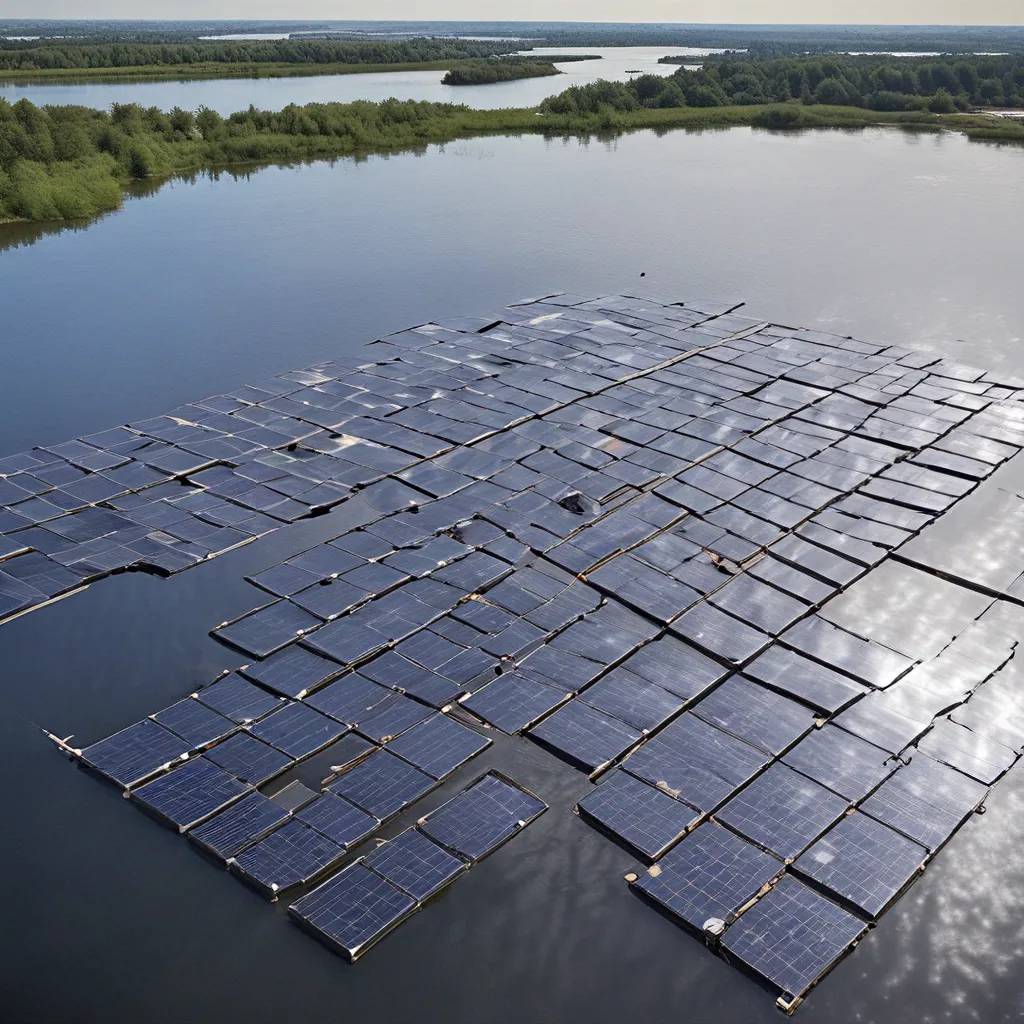
Floating Solar: The Untapped Renewable Energy Goldmine
Imagine a world where solar panels didn’t just adorn rooftops, but floated majestically atop our lakes, reservoirs, and waterways. Well, my friends, that world is here, and it’s called floating solar – or “floatovoltaics” if you want to get fancy.
As an energy enthusiast, I’ve been fascinated by this emerging technology that’s quietly making waves (pun intended) in the renewable energy sphere. And after digging into the latest research, I’ve realized that floating solar could be the key to unlocking a renewable energy revolution, especially in developing countries.
Floating Solar’s Incredible Potential
Here’s the mind-blowing part: if we were to cover just 10% of the world’s lakes and reservoirs with floating solar panels, we could generate four times the electricity that the United Kingdom uses in a year. That’s according to a recent study published in the journal Nature Water.
Imagine the impact that could have – entire countries, from Bolivia to Tonga, could potentially meet the majority of their energy needs through floating solar alone. It’s a game-changer, folks.
Now, you might be thinking, “But wait, what about the environmental impact?” That’s a valid concern, and one that researchers are actively exploring. After all, we don’t want to create more problems than we’re solving.
Balancing Ecological Considerations
According to a study published in Renewable Energy, the key is finding the sweet spot – the right amount of floating solar coverage that maximizes energy generation without causing significant harm to the aquatic ecosystem.
The researchers suggest that covering around 10% of a water body’s surface area with floating solar panels is a reasonable target. Anything more than that, and you risk cutting off too much light, which could disrupt the delicate balance of the underwater food web.
As the experts at the National Renewable Energy Laboratory have noted, floating solar panels can actually have some beneficial effects, like reducing water evaporation and even inhibiting the growth of harmful algal blooms. But it’s a delicate dance, and each water body is its own unique ecosystem, so the impacts can vary.
So, what’s the bottom line? Floating solar holds incredible potential, but we need to approach it with care and caution, always keeping the environment in mind. It’s a balance, but one that I believe we can strike.
Practical Applications and Real-World Impacts
Now, let’s get into the nitty-gritty of how floating solar could actually make a difference in the real world. One of the most exciting applications is in developing countries, where access to reliable, clean energy can be a major challenge.
Imagine a village in rural Kenya, for example, that’s been relying on dirty, inefficient diesel generators for power. With floating solar panels on a nearby lake or reservoir, they could tap into a renewable energy source that’s right at their doorstep. No more diesel deliveries, no more carbon emissions – just clean, abundant electricity.
And it’s not just about powering homes and businesses. Floating solar could also be a game-changer for existing hydroelectric infrastructure. By integrating the two technologies, countries can maximize their renewable energy potential and create a resilient, redundant system.
For instance, as the Canary Media article mentions, during periods of drought when water levels drop too low to generate hydropower, the floating solar panels could step in and provide backup power. It’s a win-win scenario for both the environment and the community.
The Future of Floating Solar
As exciting as the current potential of floating solar is, I can’t help but wonder what the future holds. Will we see entire lakes and reservoirs blanketed in these buoyant panels, generating clean energy on a massive scale? Or will we find a way to strike the right balance, allowing the aquatic ecosystems to thrive while still harnessing the power of the sun?
One thing’s for sure: the team at Plug & Save Energy Products is keeping a close eye on the latest advancements in floating solar technology. After all, as a leading provider of innovative energy-saving solutions, we’re always on the lookout for the next big thing that can help our customers reduce their carbon footprint and save money on their energy bills.
So, who knows what the future holds? Maybe one day, instead of just solar panels on rooftops, we’ll see floating solar farms dotting the landscape, powering our homes and businesses with clean, renewable energy. It’s an exciting prospect, and one that I can’t wait to see unfold.